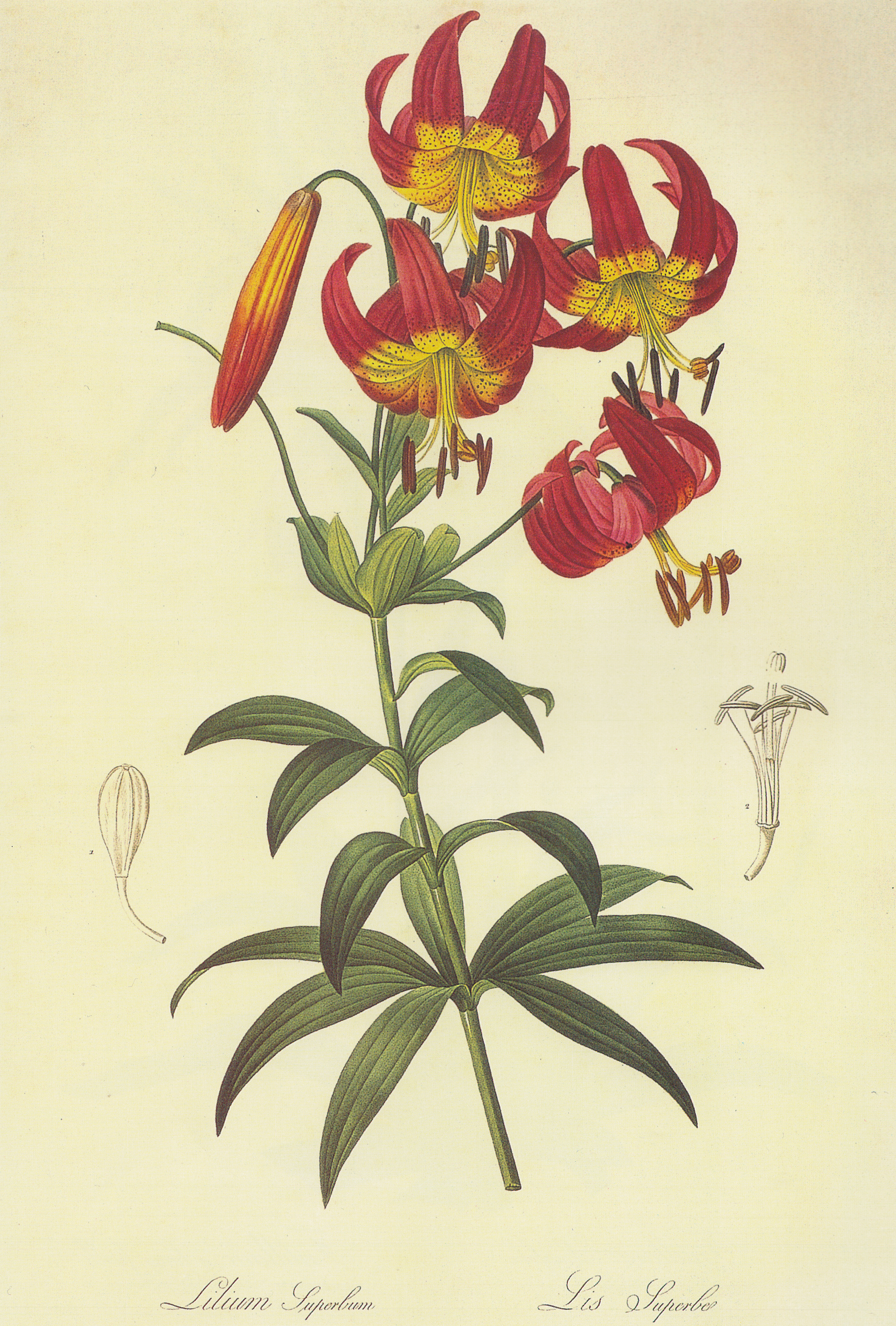Lillium superbum reminds us of a shooting star by its shape, but it's colored like a fireball; bright yellow in the center, turning orange and then red at the tips of the petals. Other notable features include the whorled leaf pattern, shown in the illustration below. In phyllotaxis, whorled means that leaves circle the stem at the same levels.
Of course, the first thing one wonders when seeing Lilium superbum in nature, is where can I get one? Why don't most people grow these in their gardens instead of all the asian tiger lillies and day lillies? As it turns out, this lily can take up to seven years from seed to bloom, which might make it expensive or discouraging for many nurseries and gardeners to grow. Since we're young and adventurous we're going to give it a try. Look for an update in 2018!
 I bet you didn't know there are hibiscus native to New York. The flower in the above photo is Hibiscus moscheutos, common name rose mallow. Its territory is similar to that of the Turk's cap lily, but extends as far west as Utah.
I bet you didn't know there are hibiscus native to New York. The flower in the above photo is Hibiscus moscheutos, common name rose mallow. Its territory is similar to that of the Turk's cap lily, but extends as far west as Utah. Rose mallow and swamp milkweed at dusk.
Rose mallow and swamp milkweed at dusk.
Our last moisture-loving flower is Asclepias incarnata, or swamp milkweed. It blooms little pink flowers like crested jewels, and as a milkweed, is a favorite food and breeding habitat for monarch butterflies. It's native to almost the whole of North America, barring the west coast.
All of these photos were recently taken by Marni during some nature spelunking in Little Compton, RI. Tragically the flowers were mostly surrounded by phragmites, Japanese honeysuckle, Russian olive, wild grape, and many more invasive species. One has to wonder what coastal Rhode Island looked like two hundred years ago, and what gems we've lost since invasives started crowding everyone out.





No comments:
Post a Comment